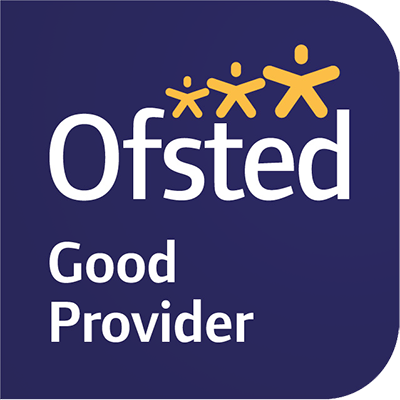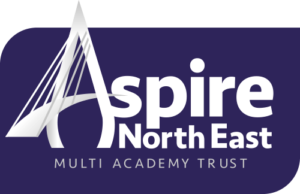Media Curriculum Overview
Learning Journey
Knowledge Organisers
- Television
- Film
- Radio
- Newspapers
- Magazines
- Advertising and Marketing
- Online, Social and Participatory Media
- Videogames
- Music Video
Key Stage 4 Curriculum
Our Key Stage 4 Curriculum:
The KS4 Curriculum is taught over 2 years. Both Y10 and Y11 pupils receive 3 50-minute lessons per week. Lessons are taught in mixed ability groups. At Key Stage 4 students follow the AQA GCSE Media Studies specification code 8572. Alongside the theoretical frameworks outlined below, practical production projects are taught intermittently during Y10, to prepare pupils for the NEA (Non-Examined Assessment) element of the course. The brief for the NEA itself is released by AQA in the summer term of Y10, and students must then produce a 300-word statement of aims, outlining how they intend to respond to the brief, fo0llowed by the media product itself. These must be submitted to AQA electronically in the months prior to the summer exams in May.
Download the full policy at the link above for a full break down of learning for each Term.
Academy Aim
Here at Sandhill View Academy, we aim to securely equip all of our students for life beyond school as successful, confident, responsible and respectful citizens. We believe that education provides the key to social mobility and our curriculum is designed to build strong foundations in the knowledge, understanding and skills which lead to academic and personal success. We want our students to enjoy the challenges that learning offers. Ultimately, we want students to ‘Know More, Do More and Go Further’
Our aims are underpinned by a culture of high aspirations. Through developing positive relationships, we work towards every individual having a strong belief in their own abilities so that they work hard, build resilience and achieve their best.
Intent
The curriculum includes formal teaching through subject areas, assemblies and extracurricular activities. We regularly review content to ensure we continue to meet our curriculum aims. The Media Studies curriculum is designed to offer our pupils a unique opportunity to engage with the world around them. By analysing and interpreting media texts, students develop critical thinking skills, media literacy, and a deeper understanding of how media shapes our lives. Through studying a range of media forms, from film and television to social media and video games, students can explore issues of representation, identity, and power. By understanding the techniques and strategies used by media producers, students can become more discerning consumers of media and more informed citizens. Ultimately, Media Studies empowers young people to question, challenge, and create media in a rapidly changing digital age. The Media Studies curriculum is planned to enable all students to cumulatively develop knowledge and skills in the following media forms:
Sequence and Structure
Our curriculum is covered in Key Stage 4 (10 and 11).
Literacy:
We know that students who read well achieve well. As such, all subject areas are committed to providing regular opportunities to read extensively. In Media Studies we provide regular opportunities for students to read and debate within the classroom environment, from a range of genres and following the whole-school focus to improve reading skills and oracy. We aspire for our students to use ambitious vocabulary and are using ‘PUSH words’ to broaden the vocabulary students use in written and verbal responses. Coherent and fluent writing skills are also imperative for student achievement; to this end, we support student writing skills by offering opportunities for extended writing, with modelling and sentence stems to support. All curriculum areas use literacy end point documents which detail yearly end points for reading, writing and oracy to ensure consistent literacy skills embedded across the curriculum.
Skills Builder
We are also explicitly embedding transferable ‘Skills Builder’ skills such as problem solving, aiming high and teamwork to prepare our students for higher education and employability skills for the future. In Media we will focus on SPEAKING and LISTENING as a great number of the texts we study are naturally interactive – many including elements of an audio-visual nature – and lend themselves neatly to advanced levels of debate and discussion. Finally, a large part of the course aims to exploit students’ CREATIVITY, as they must all produce several media products of their own design of the duration of the two-year course, culminating in the production of their NEA submission.
How does our Curriculum cater for students with SEND?
Sandhill View is an inclusive academy where every child is valued and respected. We are committed to the inclusion, progress and independence of all our students, including those with SEN. We work to support our students to make progress in their learning, their emotional and social development and their independence. We actively work to support the learning and needs of all members of our community.
A child or young person has SEN if they have a learning difficulty or disability which calls for special educational provision to be made that is additional to or different from that made generally for other children or young people of the same age. (CoP 2015, p16)
Teachers are responsible for the progress of ALL students in their class and high-quality teaching is carefully planned; this is the first step in supporting students who may have SEND. All students are challenged to do their very best and all students at the Academy are expected to make at least good progress.
- Seating to allow inclusion
- Differentiation activities to stretch and support in all lessons
- Resources are accessible yet challenging
- Displays and visual learning tools are used where necessary
- Where appropriate support from additional adults is planned to scaffold students learning
- Group work and discussion
- Clear teacher/student communication
- Feedback that allows students to make progress, whether written or verbal
- Independent study/homework.
- Intervention when required
How does our curriculum cater for disadvantaged students and those from minority groups?
As a school serving an area with high levels of deprivation, we work tirelessly to raise the attainment for all students and to close any gaps that exist due to social contexts. The deliberate allocation of funding and resources has ensured that attainment gaps are closing in our drive to ensure that all pupils are equally successful when they leave the Academy. More specifically within the teaching of History, we;
- Work to identify barriers, interests and what might help each
pupil make the next steps in learning using lead practitioner research and actions to support. - Provide targeted support for under-performing pupils during
lesson time, such as targeted questioning, live marking and seating, in addition to revision lessons and intervention outside school hours. - Use strategies best suited to addressing individual needs
- Ensure there are opportunities for students to make use of resources and gain homework support outside of lesson time through the use of Teams
- Provide students with revision materials to reduce financial burden on families
How do we make sure that our curriculum is implemented effectively?
- The Media teacher is responsible for designing the media curriculum
- Staff have regular access to professional development/training to ensure that curriculum requirements are met and subject knowledge developed
- Effective assessment informs staff about areas in which interventions are required. These interventions are delivered during curriculum time to enhance pupils’ capacity to access the full curriculum.
- Curriculum resources are selected carefully and reviewed regularly.
- Assessments are designed thoughtfully to assess student progress, long term knowledge retrieval and also to shape future learning.
- Assessments are checked for reliability within departments and across the Trust.
Gap analysis spreadsheets are used to identify areas of development for students at KS4 to identify areas of weakness
How do we make sure our curriculum is having the desired impact?
- Examination results analysis and evaluation
- Termly assessments based upon prior learning for retrieval-analysis and evaluation meetings
- Lesson observations
- Learning walks for KS3 and KS4 based upon departmental priorities
- Work sample for each year group cross referenced against milestone assessment end points
- Regular feedback from teaching staff during department meetings
- Regular feedback from Middle Leaders during curriculum meetings
- Pupil Surveys
- Parental feedback




